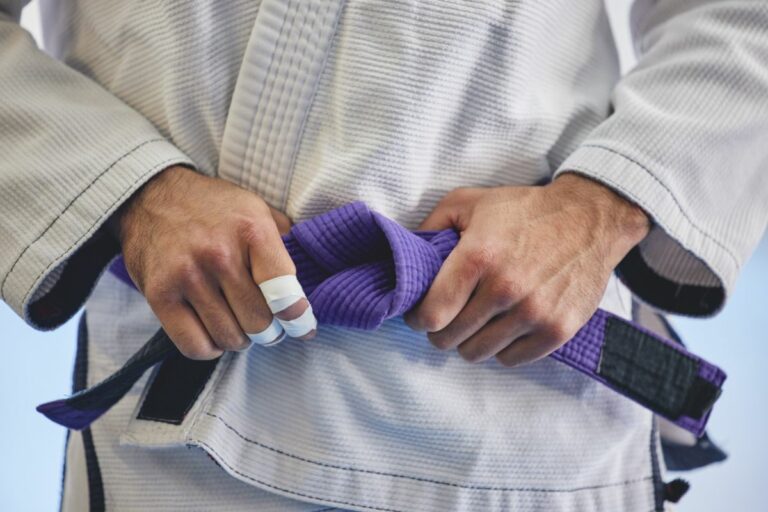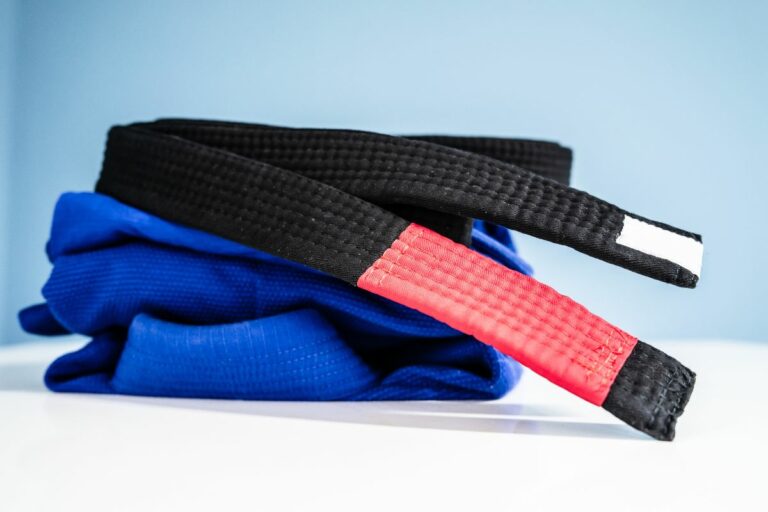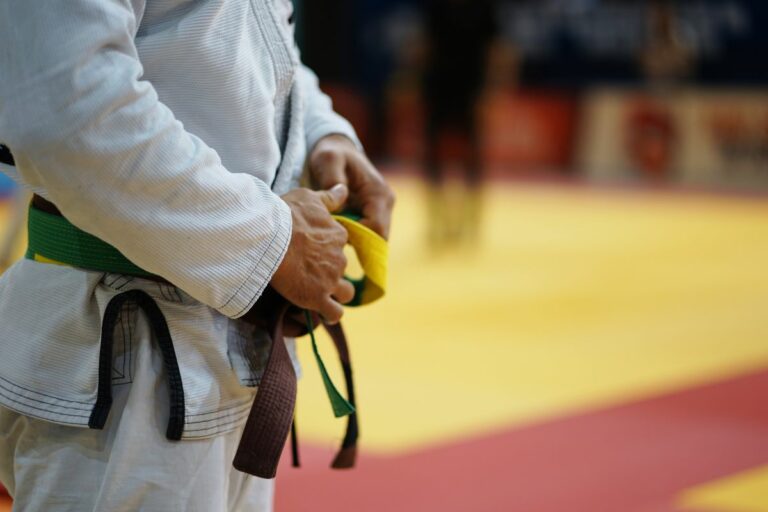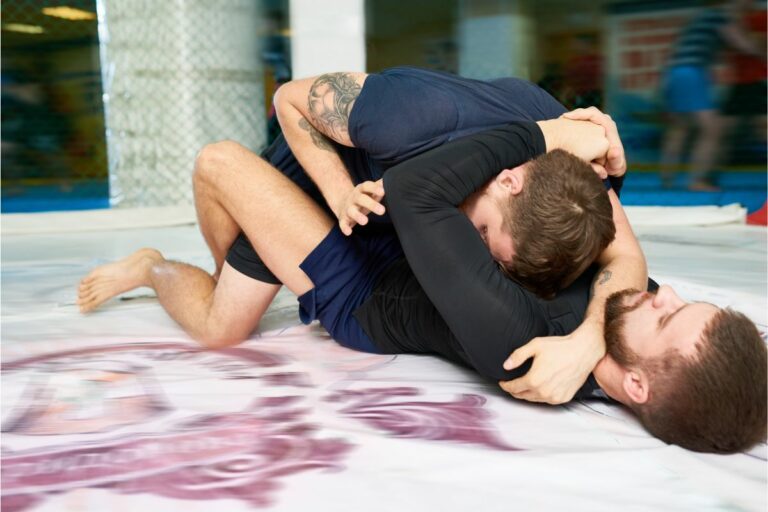What Is Japanese Jujutsu? Here’s Everything That You Should Know
Jujutsu, also known as Japanese Jiu-Jitsu (or JJJ) is an ancient martial art.
If you’re interested in starting a new martial art, you might be intrigued to know: What is Japanese Jujutsu?
In this article, I will explore some key information about Japanese Jujutsu. So, if you’re interested in learning a martial art, you have a better idea of whether Japanese Jujutsu is right for you.

Let’s get into it.
What Is Japanese Jujutsu?
Japanese Jujutsu is an ancient martial art that involves striking, immobilization, throwing, defense, and occasionally involves the use of small weapons.
Other martial arts, including Brazilian Jiu-Jitsu (BJJ) and Judo, were derived from Japanese Jujutsu.
When studying Japanese Jujutsu, students will also study Japanese history and terminology, technique theory, the human body, as well as first aid.
A Brief History Of Japanese Jujutsu
Japanese Jujutsu is a martial art that stems from sumo as well as other Japanese martial art techniques and is used in warfare.
These techniques originated from the Nara period, but one of the oldest styles of Japanese Jujutsu is known as Shinden Fudo, which goes back as far as 1130AD when it was first established.
‘Ju-Jitsu,’ ‘Jujutsu,’ and ‘Jiu-Jitsu’ are a few of the variations of the same techniques. The variations in the spelling of Japanese Jujutsu came into existence thanks to the Western pronunciation of the word.
What Does Japanese Jujutsu Teach?
As I’ve already established, Japanese Jujutsu teaches students both fighting techniques and theory throughout their journey to prepare their bodies and minds for defending themselves and others.
Fighting Techniques
Japanese Jujutsu teaches a wide variety of fighting techniques, including both defense and offense to prepare students for every eventuality that they may be faced with.
Although the specifics of each school syllabus differs when it comes to which techniques, the majority of schools cover the following topics:
Immobilization
- Ground grappling (Gatame Waza)
- Strangulation (Shime Waza)
- Pinning (Osae Waza)
- Joint-locking (Kansetsu Waza)
Striking & Defense
- Blocking and parrying
- Striking techniques (Atemi Waza)
- Postures as well as guard techniques
Throwing
- Break-falling techniques (Ukemi Waza)
- Throwing techniques (Nage Waza)
The terms mentioned above are broad terms used to encompass many different techniques that are often taught to students that are learning Japanese Jujutsu.
While some schools will only teach unarmed techniques, others will include weapons in their striking syllabus.
Although this depends on the school, these can include Jo-jutsu Kata (also recognized as ‘way of the wooden staff’) and Kenjutsu Kata (also recognized as ‘way of the sword’).
Theoretical Knowledge
Studying Japanese Jujutsu isn’t just about the physical aspect, but also encompasses a huge range of theory to equip student’s minds for a fight.
The further through your training, the more that will be demanded of you. For instance, black belts in Japanese Jujutsu may even be required to produce written papers in order to demonstrate their extensive knowledge of Jujutsu theory.
In most cases, students will typically learn aspects of the following:
- Theory behind the fighting techniques
- Japanese history
- Japanese terminology
- First aid alongside other ‘healing arts’
- Anatomy and physiology
Did Samurai Warriors Use Japanese Jujutsu?
The answer to this question is yes, Samurai warriors used Japanese Jujutsu as one of their fighting styles, and were some of the first warriors to use Japanese Jujutsu as a fighting technique during war.
Until they were abolished in the year 1876, the Japanese Samurai were widely recognized as warriors of Japan from the 12th century.
The Samurais began to recognize that when they were fighting unarmed, striking their enemy was ineffective.
As a result, they introduced grappling, throws, chokes and joint locks to their fighting style, which in turn allowed them to defeat their opponent by using their own force against them.
What Are The Main Differences Between Japanese Jujutsu And Brazilian Jiu-Jitsu?
Despite the fact that Brazilian Jiu-Jitsu was derived from Japanese Jujutsu, there are various differences between them that you should know about.
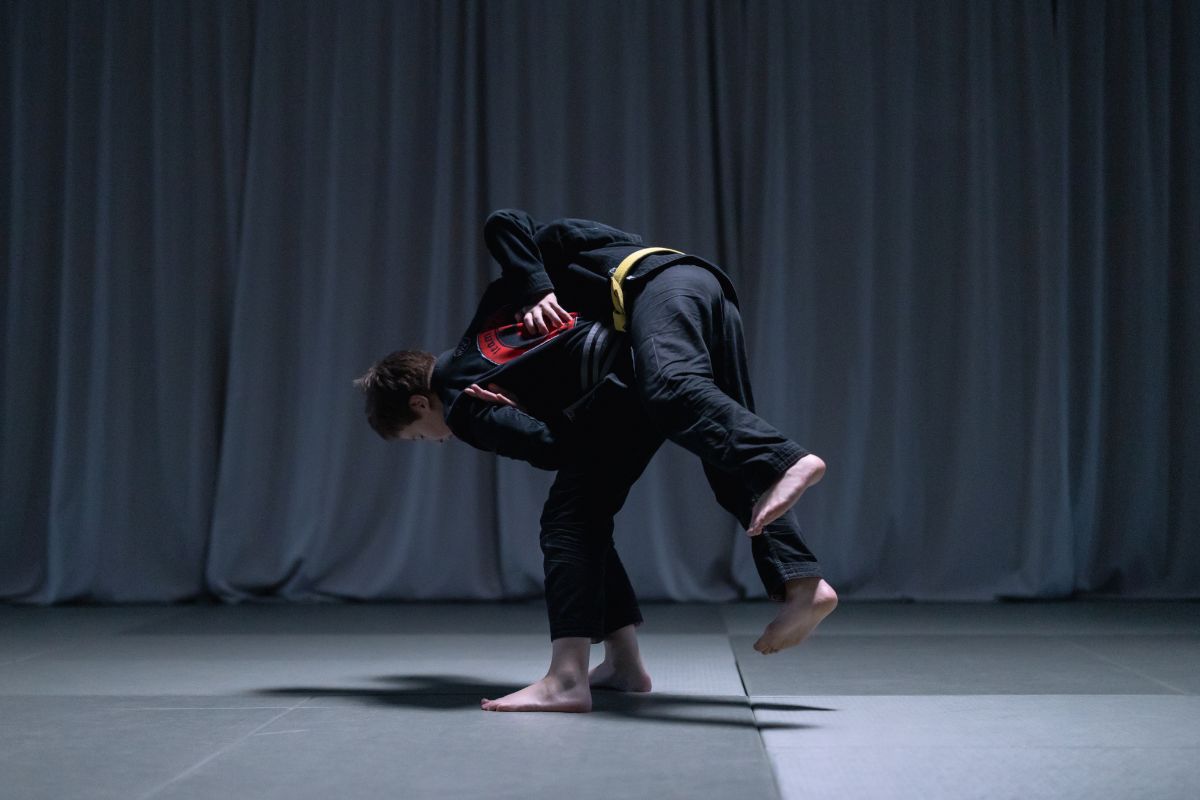
Purpose
Japanese Jujutsu’s purpose was for war. As a result of this, the techniques were naturally intended to either seriously injure or kill your attacker.
Contrastingly, when it comes to Brazilian Jiu-Jitsu, it was designed as a means of self-defense. The main purpose of BJJ, then, is to defend yourself against an attacker without causing them harm.
Techniques
As I’ve already established, there are several hundreds of techniques within Japanese Jujutsu, and they are categorized into broad groups that act as umbrella terms.
On the other hand, when it comes to the number of techniques in BJJ, you’re looking at over 600 techniques. That being said, this number doesn’t include any throwing or striking techniques.
Instead, the offensive techniques in BJJ can be categorized into joint-locking or choke-holds.
To avoid throwing their opponents to the ground, those practicing BJJ will instead ‘sweep’ their legs as an alternative. This is quintessential of the primary purpose of BJJ, which is to defend without causing any serious harm to your attacker.
Belt System & Grading
When we look at JJJ, belts are split into ‘Kyu’ for colored belts and ‘Dan’ for black belts.
There are 10 Kyu that you need to receive before you can reach Dan. However, some Japanese Jujutsu schools don’t use a belt system at all.
On the other hand, BJJ belts are named in accordance with their color.
There are four colored belts to achieve before you reach black belt, but it’s worth noting that each has four ‘stripes’ to progress through.
In order to move onto the next belt, a JJJ student needs to be formally assessed by performing various Japanese Jujutsu in front of a qualified assessor.
To progress, they will also need to demonstrate the theoretical knowledge required for the belt that they’re going for.
Another key difference is that students aren’t formally assessed like they are in JJJ. Instead, they are able to go up a belt when their instructor thinks they are ready, through observing them during their lessons.
Competitions
JJJ is perceived as a way of life as opposed to a sport. As such, it teaches its students discipline, respect and theoretical knowledge.
Sport Jiu-Jitsu competitions are how you can compete as a JJJ practitioner, but the rules that they implement mean that a number of JJJ techniques, including strikes to the face are prohibited.
In contrast, BJJ is largely competition-focused. There are a variety of BJJ competitions, such as the IBJJF World Championship and Abu Dhabi World Pro which allow practitioners to compete in.
As BJJ techniques aren’t supposed to cause serious harm, the majority of BJJ techniques are allowed to be used by competitors in these competitions.
Can Japanese Jujutsu Be Effective In Street Fighting?
Yes, Japanese Jujutsu techniques can be effective to use in a street fight.
However, you must be aware of the risks associated with using Japanese Jujutsu techniques, as many techniques can cause serious harm to your attacker.
In an ideal situation, you should be capable of defending yourself and controlling your attacker without anyone getting injured in the process.
It’s essential to note that in a high stakes situation, not everything goes to plan. There are significant risks associated with using if your attacker falls to the ground and hits their head after a strike or throw is that they could suffer a fatal head injury.
Regardless of your attacker’s motives, death is never an outcome you want to have to deal with as a result of using Japanese Jujutsu techniques.
Are Weapons Used In Japanese Jujutsu?
Generally speaking, Japanese Jujutsu is largely seen as hand-to-hand combat, which made it hugely useful when carrying a weapon was made illegal during the 17th century in Japan.
This meant practitioners of Japanese Jujutsu still had a means of protecting themselves, even when they couldn’t carry a weapon.
That being said, Japanese Jujutsu isn’t an entirely weapon-free martial art. A few weapons used include:
- Wooden staffs
- Knives
- Ropes
- Short swords
While some JJJ school’s curriculums include the use of weapons, they still stress an emphasis on and teach defense against weapons.
In addition to this, schools have the tendency to adapt their weapon defense training to common street weapons, including the use of pocket knives, bats, and even guns, as this is more relevant to today’s society.
Despite the fact some curriculums include the use of weapons, this differs from school to school.
Which Should You Learn: BJJ or Japanese Jujutsu?
There are strengths and weaknesses associated with both Japanese Jujutsu and BJJ, meaning the answer will largely depend on you and what you’d like to get out of learning the martial art in question.
Generally speaking, BJJ is considered to be the more practical of the two, as it teaches practitioners the techniques that they require to help control an oncoming attacker.
Although it doesn’t teach defense against weapons in the same way that JJJ does, it instead focuses on knowing how to avoid a fight and when to engage in one safely.
Japanese Jujutsu is still incredibly useful when it comes to fighting, but this is to be expected, as it includes a broader curriculum.
In addition to this, learning JJJ provides you with the opportunity to learn a huge array of topics, including the history of JJJ, as well as a lot about Japanese culture as a whole, how to treat injuries, and how the human body works.
If you’re interested in learning offense as well as defense techniques, then JJJ is overall the better option.
If you’re deciding between starting BJJ and JJJ, why not give both a try? I highly recommend that you do some research to find out what you’ve got available to you.
Alternatively, if you want to try either BJJ or JJJ before you actually go to a class, you can always use the copious amounts of videos online to get a feel and better understanding of which you prefer.
After all, all you need for this option is a WiFi connection, and you can try both to see which one you’d like to spend your money on. It’s a win-win.
Is Japanese Jujutsu Still Practiced?
The answer to this question is yes! JJJ is still practiced all over the world in many schools known as ‘Ryu.’
In these schools, lots of senior instructors have either learned all they know in Japan or under a Japanese master. However, it’s worth noting that each school adheres to one particular style of Japanese Jujutsu.
It’s important to mention that JJJ has also become more popular and widespread thanks to the internet, as well as online instructional videos.
Many instructors will record certain techniques and upload them for others to learn on their own. As a result, people without a local JJJ school have access to many JJJ techniques.
When it comes to using JJJ in a practical sense, the majority of practitioners of JJJ see it as a way of life.
While it provides a means of self-defense when a situation that calls for it arises, it teaches discipline and respect that can be used in everyday life, and this aspect of it shouldn’t be underestimated.
In Summary
So, that’s all you need to know about Japanese Jujutsu. I hope this article has given you a better understanding of the martial art, Japanese Jujutsu.
If you’re interested in taking up a new hobby, why not research your area and see if you can attend Japanese Jujutsu classes near you?
Good luck and enjoy learning a new skill!


